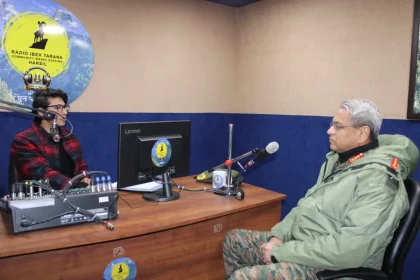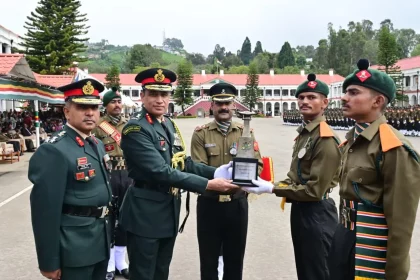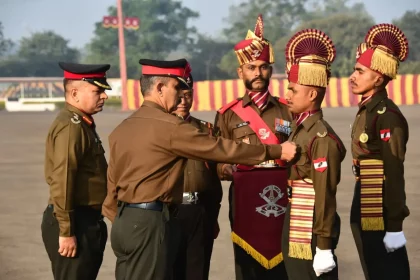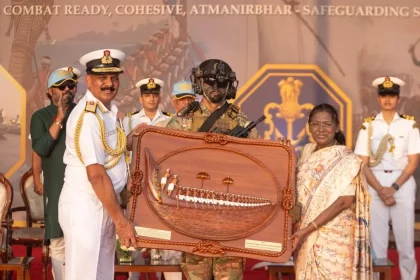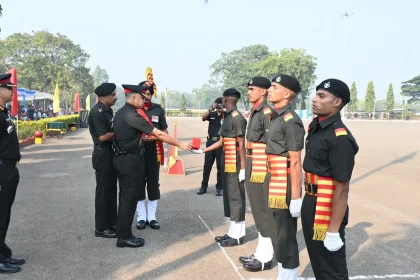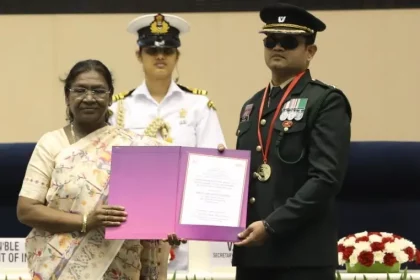Lt Gen Anindya Sengupta Visits Newly Inaugurated Community Radio Station in Harsil, Lauds Army’s Efforts to Empower Remote Communities
Lt Gen Sengupta Reviews Community Outreach Efforts at Radio IBEX Tarana 88.4 FM in Harsil.
695 Agniveers Attested into Madras Regiment in a Passing Out Parade at Wellington
695 Agniveers Join the Madras Regiment After a Spectacular Passing Out Parade in Wellington.
659 Agniveers Attested at Mahar Regiment Centre in Impressive Passing Out Parade
Young Soldiers Begin Their Journey of Service After Completing Rigorous Training.
President Droupadi Murmu Leads Navy Day 2025 Celebrations in Thiruvananthapuram, Reaffirms India’s Commitment to Open and Rules-Based Oceans
President Murmu Leads Navy Day 2025 Celebrations in Thiruvananthapuram, Showcases India’s Maritime Strength.
935 Agniveers Attested in Grand Passing Out Parades at ACC&S and MIRC, Ahilyanagar
935 Agniveers Pass Out in Dual Ceremonial Parades at ACC&S and MIRC in Ahilyanagar.
Lt Col Dwarakesh C Honoured with National Award for Persons with Disabilities 2025
Army Officer Honoured for Exemplary Courage, Service and Paralympic Excellence.

